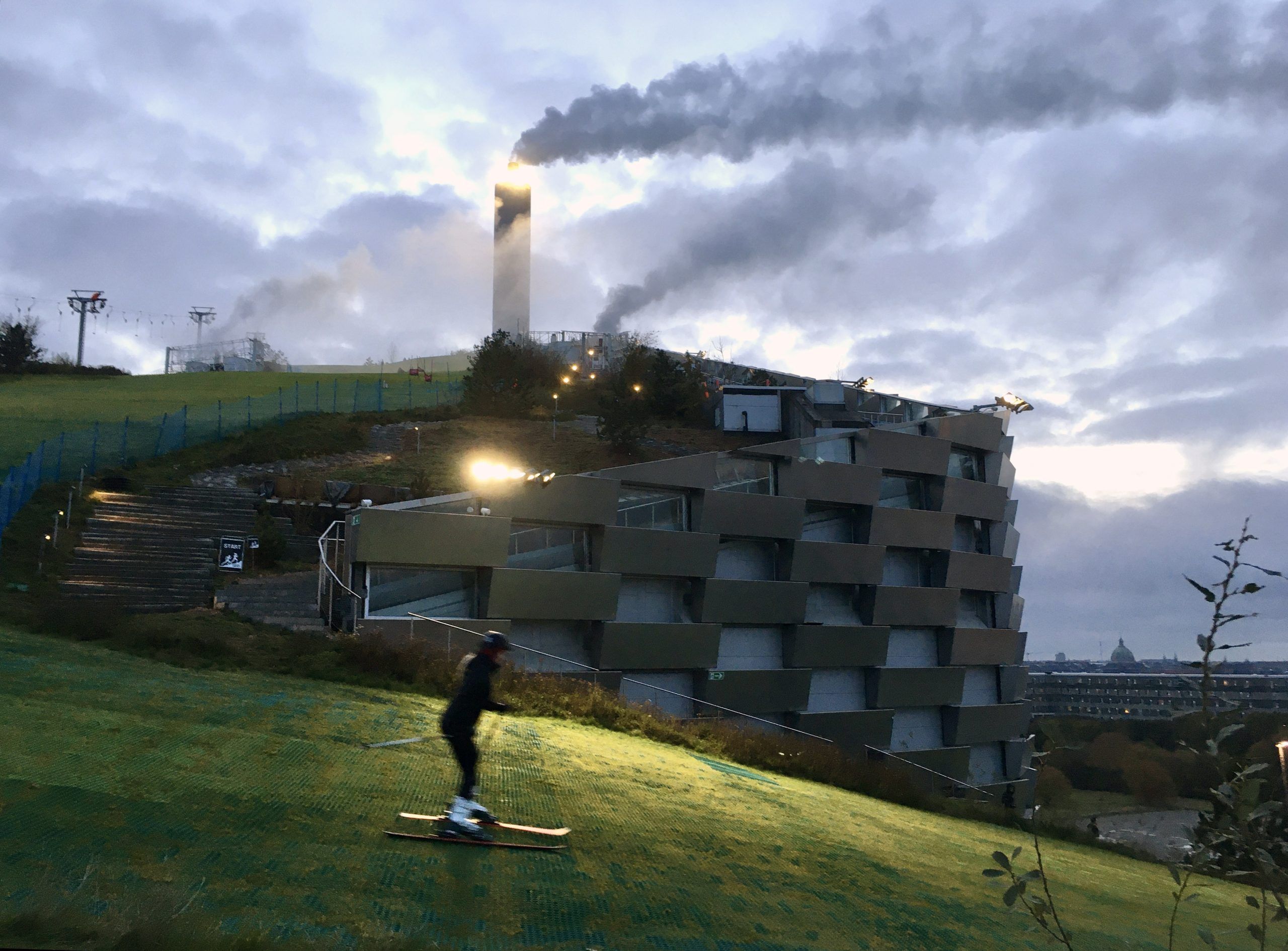While I was standing on top of Amager Bakke, I felt like Copenhagen’s green transition was unfolding before me.
Paradigm parallel turns
An old paradigm involving the former incinerator being dismantled was vanishing in front of my eyes while a new paradigm was taking over with an array of windmills and the state-of-the-art waste-to-energy plant I was standing on.
In the old paradigm, I wanted to be as far away as possible from a plant burning trash: it’s dirty, it pollutes, it’s noisy and it’s smelly.
But in the world of clean technologies, it had suddenly become a destination, and I was skiing on top of two gigantic furnaces.
Green superpower
In the 1970s, when the oil crises hit Denmark very badly, the country was 99 percent dependent on foreign oil.
Measures to save energy were introduced such as car-free Sundays – at a time when the cycling infrastructure was close to non-existent. White crosses were painted on the roads where cyclists had been killed, and there were demonstrations.
The pragmatic and agile nation responded fast: and soon bikes had taken precedence over cars. This was the beginning of the Danish green transformation, and in 1991, Denmark built the world’s first off-shore wind farm.
t that time, it was far from being a lucrative business. Only a political vision could support such an expensive transformation, but those investments have turned out to be extremely healthy.
Green solutions lab
In 2020, sustainability measures around the world take inspiration from Scandinavia. And this is only the start, as Denmark has pledged to cut carbon emissions by 70 percent by 2030, become 100 percent independent of fossil fuels by 2050, and for Copenhagen to be carbon-neutral by 2025.
The targets are extremely ambitious. “We no longer have low-hanging fruits to pick as we picked them 30 years ago,” contends Dan Jørgensen, the minister for climate, energy and utilities.
We therefore need to change the way we produce, consume and transport ourselves. Basically, the way we live.
Doesn’t need to be hard
Fight for and not against a nicer environment, a more liveable city and a better life. All studies show that nature makes us happier.
The CopenHill roof park, for example, is expected to spread its biodiversity by pollinating the once grimy industrial area. It’s a power plant that is also a park. This is an illustration of what Bjarke Ingels, the Danish architect behind its design, calls hedonistic sustainability: “Sustainability that improves the quality of life and human enjoyment”.
We are all contributing to climate change in our daily lives. When we shop, unsustainable goods are still cheaper than sustainable counterparts. But cheap is expensive and tasteless.
Initiatives like GrimBox give hope for a new paradigm, making “food boxes with ugly-by-nature and surplus organic fruit and veg that don’t fit retail beauty standards”.
Create the future
How are we going to reach the ambitious target? Well, each one of us has a role to play to create the kind of future we want. Creativity starts with a great ‘what if?’.
And here’s an easy one to begin with: what if business people had annual quotas on air travel? Would videoconferencing suffice? Or sending a full-sized hologram, like French politician Jean-Luc Melenchon, who appeared at seven different locations at the same time during his 2017 presidential campaign?
It was a reminder that we all need to change our behaviour – even politicians.

